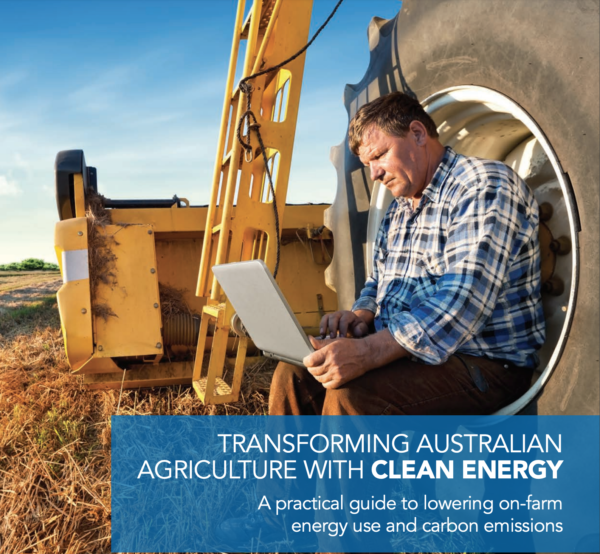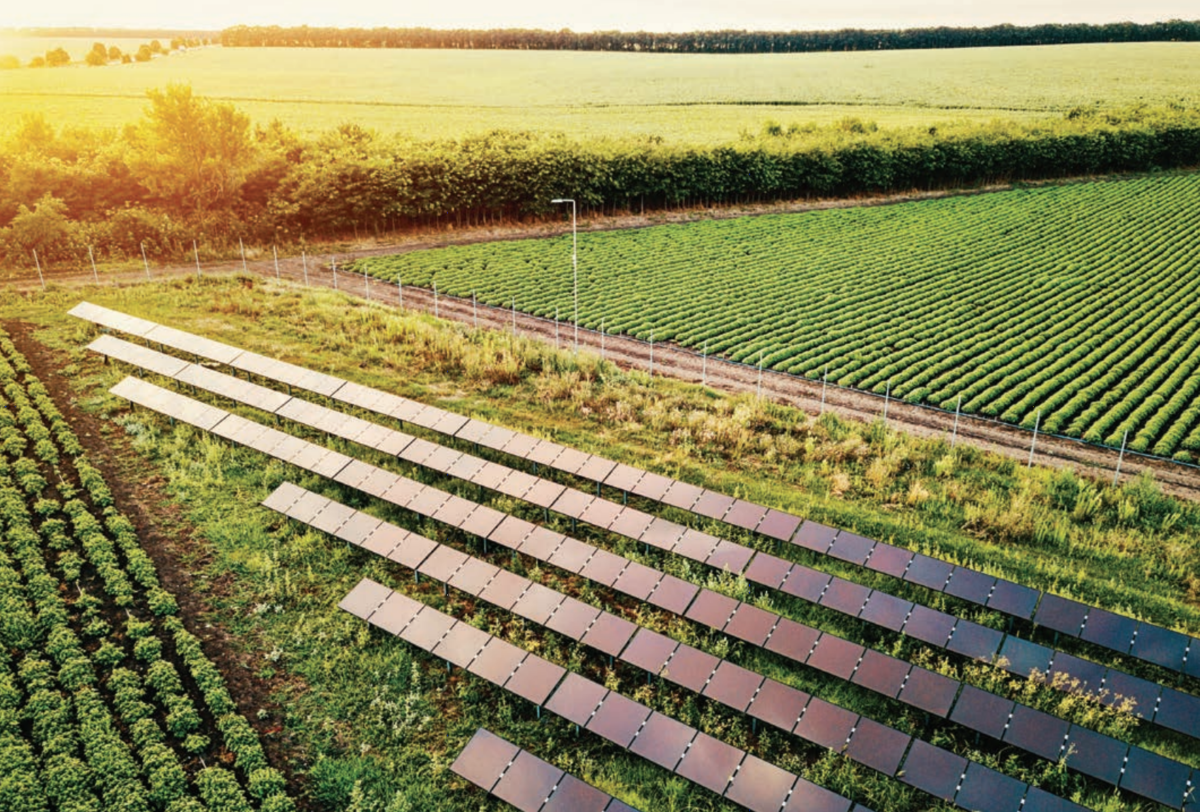At a time when Australian agricultural businesses are battling interminable drought and rising costs, the Clean Energy Finance Corporation (CEFC) has partnered with the National Farmers’ Federation (NFF) and the University of Southern Queensland to help farmers identify opportunities to reduce their energy bills by implementing efficiencies and harnessing renewable energy sources.
Published today, Transforming Australian Agriculture with Clean Energy, is a clearly expressed guide outlining seven ways in which farmers can rethink their approaches to vehicle and machinery use; irrigation and pumping; heating, cooling and processing; energy generation and even grid connection.
“Solar PV gets cheaper every year and is well suited to on-farm use, and microgrids can help particularly in remote areas or where network connections are expensive,” write CEFC CEO Ian Learmonth, and Tony Mahar head of the NFF, in the introduction to the guide.

Image: CEFC and NFF
“Australia’s farmers have a well-deserved reputation for innovation and land care,” said Learmonth in a statement accompanying the publication launch, but agriculture remains the country’s fourth most energy-intensive industry behind manufacturing, transport and mining.
“Already more than 1,100 agriculture projects are drawing on $260 million in CEFC finance to invest in solar PV, lower emissions farm equipment, energy efficient machinery upgrades and biomass energy-from-waste,” said Learmonth.
Federal Minister for Energy and Emissions Reduction, Angus Taylor, and Minister for Agriculture, Bridget McKenzie, issued a statement in relation to the CEFC and NFF initiative, saying, “Many farmers will be eligible to access $50 million in energy efficient communities program grants in early 2020 to help with the cost of improving energy efficiency practices and technologies in the ways outlined in the guide.”
Up to $10 million has been allocated to eligible dairy farms, in particular, “in recognition of the impact high electricity costs have on a sector that must milk and then chill its product”, the Ministers said.
The guide aims to increase engagement with farmers and their understanding of how to fund and factor in returns on their investments over time.
One recent CEFC-financed project, the installation of 1.4 MW of solar PV across the rooftops of Nine Mile Fresh apple processing and packing plant in Victoria, is projected to reduce the facility’s annual energy bill of more than $1 million by a third, and to pay for itself within six years.
On a smaller scale, Queensland cotton and chickpea producer Don Baartz transformed the energy demands of his on-farm irrigation systems by installing a 25 kW purpose-built solar PV system to help run an 18 kW bore pump on his Darling Downs property. From about 8am to 4pm, the pump is powered by solar, limiting its demand on the grid largely to off-peak periods, and resulting in an annual saving of around $8,000.
Financed through the NAB Energy Efficient Bonus program, which uses CEFC finance to offer 0.7% discount on finance for eligible clean-energy investments, the solar system stands to provide an additional $5,000 per annum income when surplus energy is exported to the grid.
“Realistic cost estimates,” and likely returns are a feature of the guide, says Mahar, with installation of small-scale wind, solar PV or hydroelectric systems calculated to require investment of up to $25,000.
The energy- and agriculture-savvy CEOs describe their combined mission as “bringing the benefits of one of our newest industries, clean energy, to one of our most established, agriculture.”
Adds Mahar, “Clean energy leads to greater efficiencies and productivity and an overall lower emissions profile for the agribusiness sector.” He believes the guide will ultimately help Australian farmers “be more productive and competitive”.
This content is protected by copyright and may not be reused. If you want to cooperate with us and would like to reuse some of our content, please contact: editors@pv-magazine.com.









1 comment
By submitting this form you agree to pv magazine using your data for the purposes of publishing your comment.
Your personal data will only be disclosed or otherwise transmitted to third parties for the purposes of spam filtering or if this is necessary for technical maintenance of the website. Any other transfer to third parties will not take place unless this is justified on the basis of applicable data protection regulations or if pv magazine is legally obliged to do so.
You may revoke this consent at any time with effect for the future, in which case your personal data will be deleted immediately. Otherwise, your data will be deleted if pv magazine has processed your request or the purpose of data storage is fulfilled.
Further information on data privacy can be found in our Data Protection Policy.